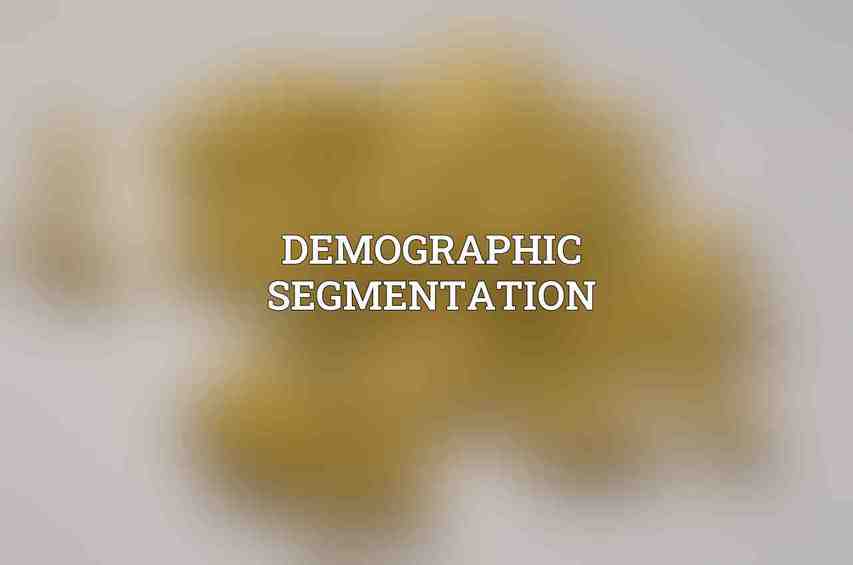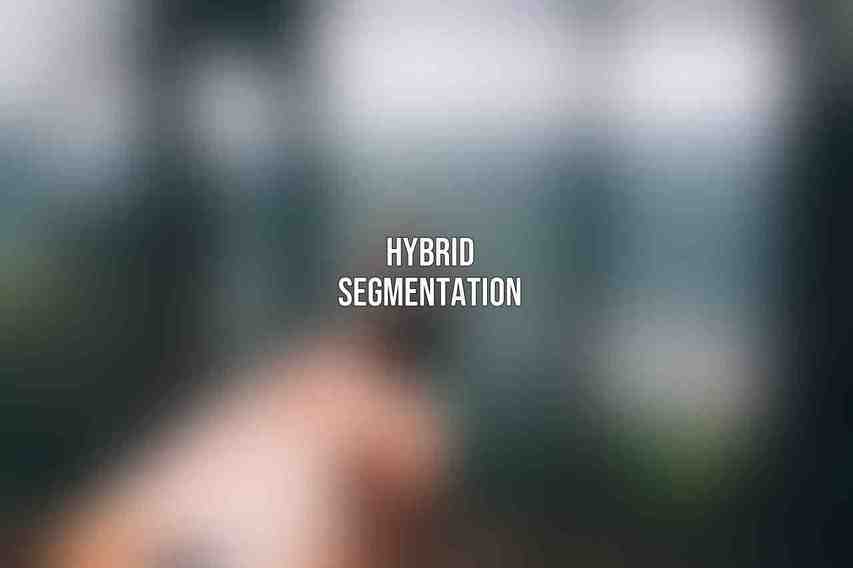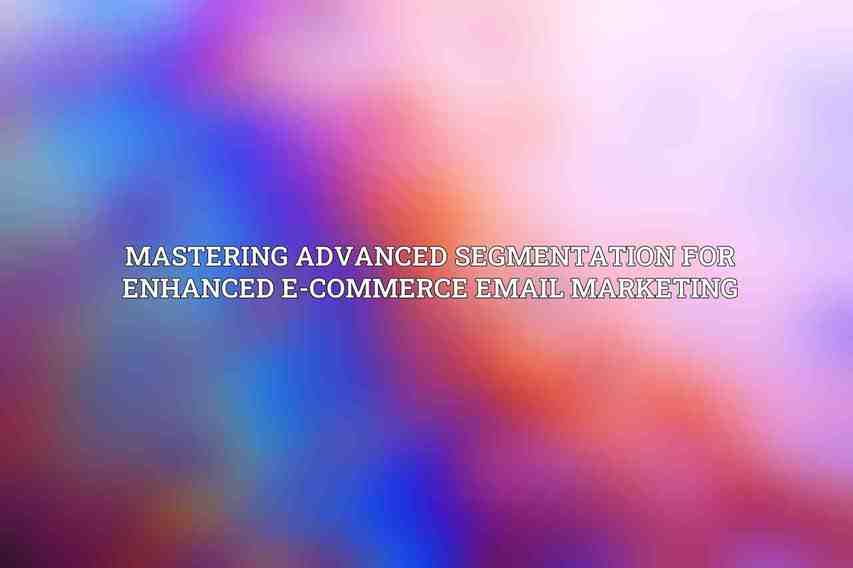Allowing businesses to target specific audience segments with tailored content. advanced segmentation takes this concept a step further by incorporating more sophisticated techniques to enhance the effectiveness of email marketing strategies. while the benefits of advanced segmentation are substantial, businesses also face challenges in implementing and optimizing these strategies effectively. Understanding advanced segmentation strategies is key to maximizing the impact of e-commerce email marketing efforts.
Behavioral Segmentation
Behavioral segmentation involves categorizing customers based on their actions and interactions with a brand. One of the key aspects of behavioral segmentation in e-commerce is purchase history segmentation. This strategy involves dividing customers based on their buying behavior, which can provide insights into their preferences and buying habits. By creating segments such as frequent buyers or first-time buyers, businesses can tailor their email content to suit each group’s needs.
Analyzing purchase patterns, such as total spend and average order value, enables marketers to offer personalized product recommendations, similar to how Amazon uses customers’ purchase history to suggest products they may be interested in based on past purchases. This level of personalization can significantly increase engagement and sales.
Another critical component of behavioral segmentation is website engagement segmentation. By tracking metrics like page views and time spent on the site, businesses can create segments for customers who have shown specific behaviors, such as abandoning their carts or frequently visiting product pages. Sephora, for example, effectively targets customers who have viewed a specific product category with relevant email campaigns, driving conversion rates.
Moreover, tracking email engagement segmentation metrics like open rates, click-through rates, and conversions allows businesses to identify active, inactive, and disengaged subscribers. Leveraging this data, platforms like Mailchimp automate email sequences triggered by subscriber behavior, ensuring that subscribers receive content tailored to their level of engagement.
Demographic Segmentation

Demographic segmentation involves categorizing customers based on factors such as age, gender, income, and education level. Geodemographic segmentation targets customers based on location, including country, state, and city. By personalizing content according to geographic variables like urban, suburban, or rural areas, businesses can deliver more relevant messages. Airbnb, for instance, sends personalized welcome emails based on the guest’s destination, enhancing the overall customer experience.
Psychographic segmentation focuses on grouping customers based on personality traits, values, and lifestyle choices. By considering factors like interests, attitudes, and motivations, businesses can tailor their messaging to resonate with specific customer segments. Nike, for example, tailors its email campaigns to resonate with runners, fitness enthusiasts, and sports lovers, enhancing engagement and loyalty.
RFM Segmentation
RFM segmentation involves analyzing customer behavior based on three key factors: recency, frequency, and monetary value. By calculating RFM scores for each customer, businesses can categorize them into segments such as active customers or those at risk of churn. Starbucks, for instance, structures its loyalty program tiers based on RFM analysis, rewarding customers based on their level of engagement and loyalty.
Predictive Segmentation
Predictive segmentation utilizes machine learning and artificial intelligence to forecast customer behavior and preferences. By leveraging predictive models like clustering and decision trees, businesses can identify potential customers and their needs more accurately. Netflix is a prime example of using predictive segmentation through its recommendation engine, which analyzes user behavior to suggest personalized content that resonates with individual preferences.
Hybrid Segmentation

Hybrid segmentation involves combining multiple segmentation strategies to refine targeting and personalization. By leveraging a mix of behavioral, demographic, RFM, and predictive segmentation techniques, businesses can achieve more nuanced and effective segmentation models. This approach leads to increased personalization and more targeted messaging, ultimately improving customer engagement and conversion rates.
Best Practices for Advanced Segmentation
To master advanced segmentation for e-commerce email marketing, businesses should adhere to the following best practices:
- Set clear segmentation goals and objectives to align strategies with business objectives.
- Gather and analyze relevant customer data to ensure accurate segmentation.
- Utilize advanced segmentation software and tools to automate processes and improve efficiency.
- Continuously evaluate and refine segmentation strategies based on performance metrics and customer feedback.
mastering advanced segmentation is pivotal for driving the success of e-commerce email marketing campaigns. By leveraging behavioral, demographic, RFM, predictive, and hybrid segmentation techniques, businesses can deliver more personalized and targeted content to their customers, leading to enhanced engagement and conversions. As the future trends in email segmentation continue to evolve, businesses that prioritize ongoing optimization and innovation in their segmentation strategies will stay ahead of the curve in a competitive e-commerce world.
Frequently Asked Questions
1. What is advanced segmentation in e-commerce email marketing?
Advanced segmentation in e-commerce email marketing is the practice of dividing your subscriber list into smaller, more targeted segments based on specific criteria such as past purchase behavior, demographics, or engagement level.
2. How can advanced segmentation benefit e-commerce email marketing campaigns?
Advanced segmentation can benefit e-commerce email marketing campaigns by allowing you to send more targeted and relevant content to specific segments of your audience. This can lead to higher open rates, click-through rates, and ultimately, more conversions.
3. What are some common segmentation strategies used in e-commerce email marketing?
Common segmentation strategies in e-commerce email marketing include segmenting based on purchase history, browsing behavior, geographic location, demographic information, and engagement level with past emails.
4. How can I effectively implement advanced segmentation in my e-commerce email marketing strategy?
To effectively implement advanced segmentation in your e-commerce email marketing strategy, start by defining your segmentation criteria, collecting and analyzing data, using an email marketing platform with robust segmentation capabilities, and testing and refining your segmentation strategy based on performance metrics.
5. What are some tools or platforms that can help with advanced segmentation in e-commerce email marketing?
There are several email marketing platforms that offer advanced segmentation capabilities, such as Mailchimp, Klaviyo, and Campaign Monitor. These platforms allow you to create and manage segments based on a variety of criteria to tailor your email marketing campaigns for better results.

